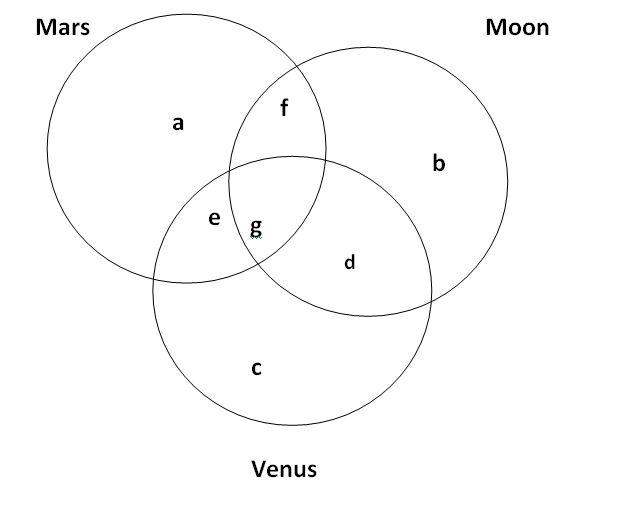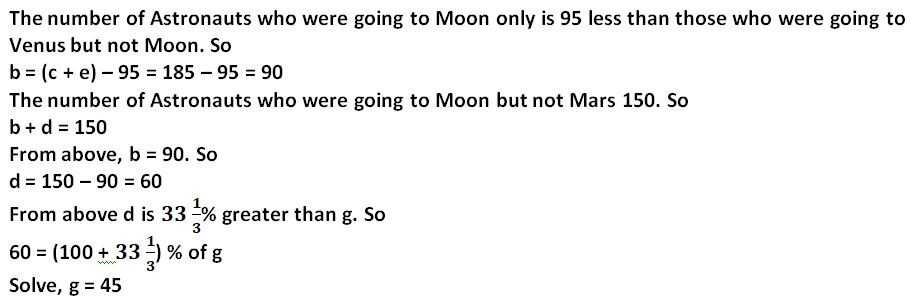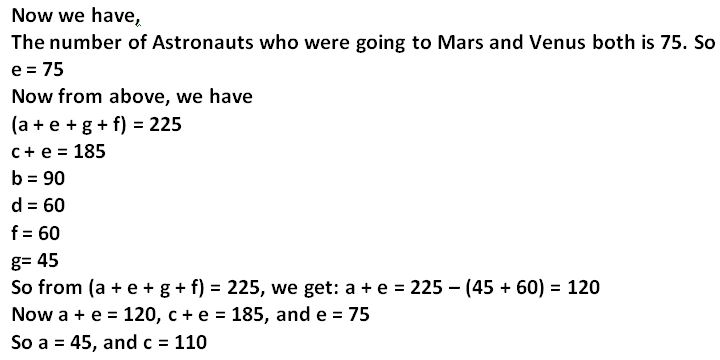Question
What is the ratio between Astronauts who were going to
only Venus and who were going only to both Moon and Venus? Directions (181 – 185): Study the following and answer the questions that follow: There are some Astronauts who were going to three different missions – Mars, Moon and Venus. Number of Astronauts who were going to Mars is 225, of which % Astronauts who were going to both Mars and Moon. The number of Astronauts who were going to Moon and Venus only are % greater than those who were going to all the three missions. The number of Astronauts who were going to Venus but not Moon is 185. The number of Astronauts who were going to Moon only is 95 less than those who were going to Venus but not Moon. The number of Astronauts who were going to Moon but not Mars 150. The number of Astronauts who were going to both Mars and Venus only is 75.Solution
 Number of Astronauts who were goint to Mars is 225 so (a+e+g+f) = 225 of which 26(2/3)% Astronauts were going only on mars and moon so f = 26 (2/3)% of 225 = 60 the number of astronauts who were going to both moon and venus are 33(1/3)% greator than those who were going to all the three missions, so d is 33(1/3)% greator than g the number of astronauts who were going to venus but not moon is 185. so c + e = 185 (means venus and mars)
Number of Astronauts who were goint to Mars is 225 so (a+e+g+f) = 225 of which 26(2/3)% Astronauts were going only on mars and moon so f = 26 (2/3)% of 225 = 60 the number of astronauts who were going to both moon and venus are 33(1/3)% greator than those who were going to all the three missions, so d is 33(1/3)% greator than g the number of astronauts who were going to venus but not moon is 185. so c + e = 185 (means venus and mars) 

What is the shortcut key to "Undo" the last action in a document?
Which of the following shortcut key is used to select all cells of the current row in MS-Excel 2010 worksheet?
Which out of following is not a file extension of a video file?
Which of the following printers is used in conjunction with computers and uses dry ink powder?
A kilobyte is equal to _______ bytes.
Which of the following is a Web browser?
A repair for a known software bug, usually available at no charge on the internet, is called a(n) ________.
A function inside another function is called a ….. Function.
One nibble is equal to how many bits?
A computer network which is used within a building is called a:
Relevant for Exams:


